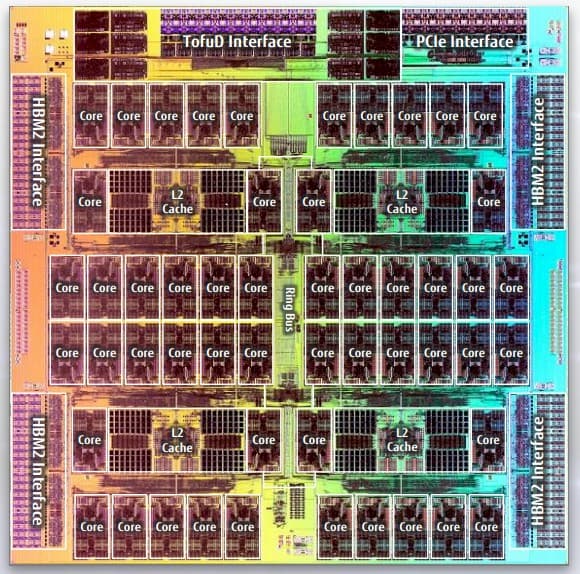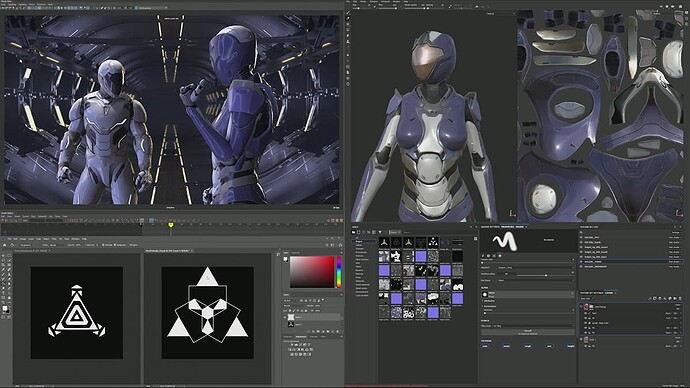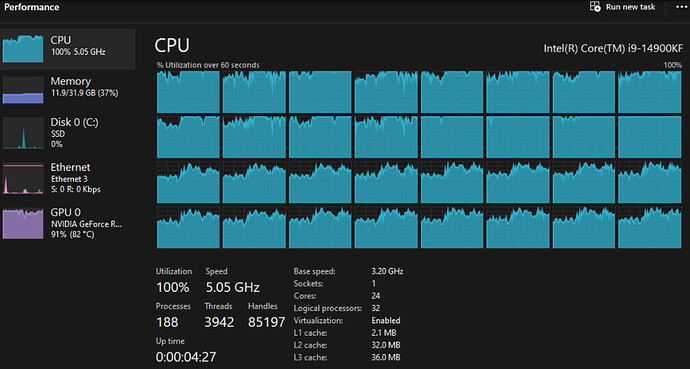In the realm of video editing and graphics rendering, hardware specifications play a crucial role in determining performance, efficiency, and overall workflow. One of the most debated aspects among professionals and enthusiasts alike is the number of CPU cores required for optimal performance. This article delves into the significance of having 32 cores for video editing and graphics rendering, exploring various factors such as software optimization, workload types, and practical insights from industry standards.
1. Understanding CPU Cores
1.1 What Are CPU Cores?
A CPU core is an individual processing unit within a computer’s CPU (Central Processing Unit). Each core can execute instructions independently, allowing multi-core processors to handle multiple tasks simultaneously. In video editing and graphics rendering, this parallel processing capability is essential for managing complex calculations and rendering tasks.
1.2 Core Count and Performance
While more cores generally lead to better performance, the relationship is not always linear. Software must be optimized to utilize multiple cores effectively. Some applications benefit from high core counts, while others may only use a few cores efficiently.
2. The Role of CPU Cores in Video Editing
2.1 Software Optimization
Most modern video editing software, such as Adobe Premiere Pro, Final Cut Pro, and DaVinci Resolve, has made significant strides in optimizing for multi-core CPUs. These applications can distribute rendering tasks across multiple cores, significantly reducing rendering times.
- Adobe Premiere Pro: Utilizes GPU acceleration and multi-threading, meaning it can leverage multiple cores effectively for rendering and effects processing.
- Final Cut Pro: Optimized for macOS and takes advantage of multi-core CPUs, particularly on the latest Apple Silicon chips.
- DaVinci Resolve: Known for its robust performance with multi-core CPUs, especially during color grading and rendering tasks.
2.2 Types of Workloads
Not all video editing tasks are created equal. Different tasks may use CPU resources differently:
- Rendering: This is where core count has the most significant impact. More cores can drastically reduce the time it takes to export a finished project.
- Real-time Playback: This often relies more on the GPU and less on CPU cores, though having a powerful CPU can still help with playback of high-resolution video files.
- Effects and Transitions: Applying complex effects may utilize multiple cores, especially if the software is optimized for it.
3. The Role of CPU Cores in Graphics Rendering
3.1 Software Optimization
Graphics rendering software, such as Blender, Maya, and Cinema 4D, also varies in how well it can utilize multiple cores.
- Blender: Known for its excellent multi-threading capability, allowing render tasks to be distributed across many cores.
- Maya: Utilizes multiple cores effectively, particularly in rendering and simulation tasks.
- Cinema 4D: While it can utilize multiple cores, certain tasks may still be limited by the software’s architecture.
3.2 Rendering Engines
The choice of rendering engine can significantly affect how well cores are utilized. For example:
- Render Engines like Arnold and V-Ray: These engines are designed to take advantage of multi-core architectures, providing faster rendering times as core counts increase.
- Real-Time Rendering: Engines like Unreal Engine and Unity may not benefit as much from high core counts due to their reliance on GPU processing.
4. Practical Insights: Is 32 Cores Enough?
4.1 Workstation Configuration
A typical workstation for video editing and graphics rendering might include:
- CPU: 32-core processor, such as AMD Ryzen Threadripper or Intel Xeon.
- RAM: 64GB or more, depending on project size and complexity.
- GPU: A high-performance GPU to handle real-time rendering and effects.
4.2 Performance Benchmarks
Studies and user benchmarks indicate that a 32-core CPU can significantly outperform lower-core-count CPUs in rendering tasks but may not always provide a proportional increase in performance for all editing tasks.
- Rendering Tests: 32-core CPUs can reduce rendering times by up to 50% compared to 16-core CPUs in specific software environments.
- Real-time Editing: For real-time playback and editing, the difference may be less noticeable unless working with extremely high-resolution footage.
4.3 Cost vs. Benefit Analysis
Investing in a 32-core CPU can be costly. For many users, especially those just starting, a 16-core or even an 8-core CPU may provide sufficient performance at a lower cost. However, for professionals working on large-scale projects or in a studio environment, the investment in a 32-core CPU can pay off in time saved during rendering.
5. Future-Proofing Your Setup
5.1 Trends in Video Editing and Rendering
As video resolutions increase (e.g., 4K, 8K), and as software continues to evolve, the demand for higher core counts will likely increase. Future-proofing your setup with a 32-core CPU can ensure that you remain competitive in an evolving landscape.
5.2 Hardware Compatibility
Ensure that your motherboard and other components can support a 32-core CPU. Socket compatibility, power supply requirements, and cooling solutions are vital considerations.
6. Personal Experiences and Case Studies
Real-world experiences from professionals can provide valuable insights into the effectiveness of a 32-core CPU:
- Case Study 1: A film studio reported a 70% reduction in rendering times after upgrading from a 16-core to a 32-core CPU, allowing them to meet tight deadlines.
- Case Study 2: A freelance editor found that while their 32-core CPU significantly improved rendering times, they still experienced bottlenecks during heavy effects processing, indicating that software optimization is equally important.
Conclusion
In conclusion, a 32-core CPU is more than adequate for video editing and graphics rendering, especially for professionals working on complex projects. The ability to handle multiple tasks simultaneously, particularly during rendering, can lead to significant time savings and increased productivity. However, the actual performance benefits will depend on the specific software being used, the nature of the tasks, and overall system configuration.
For those starting in video editing or graphics rendering, a lower-core-count CPU may suffice. However, for serious professionals, investing in a 32-core CPU can provide a competitive edge and future-proof your workflow as technology continues to advance. Remember to balance your investment with other critical components, such as GPU, RAM, and storage, to create a well-rounded and efficient workstation.


